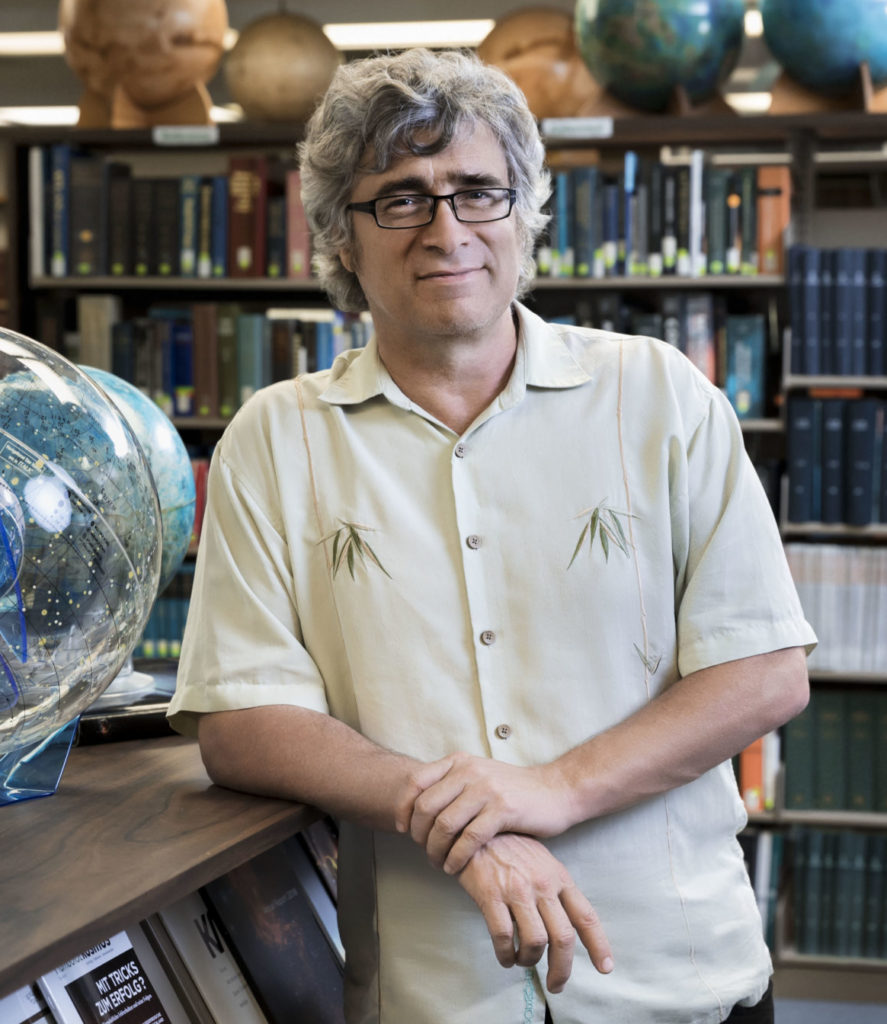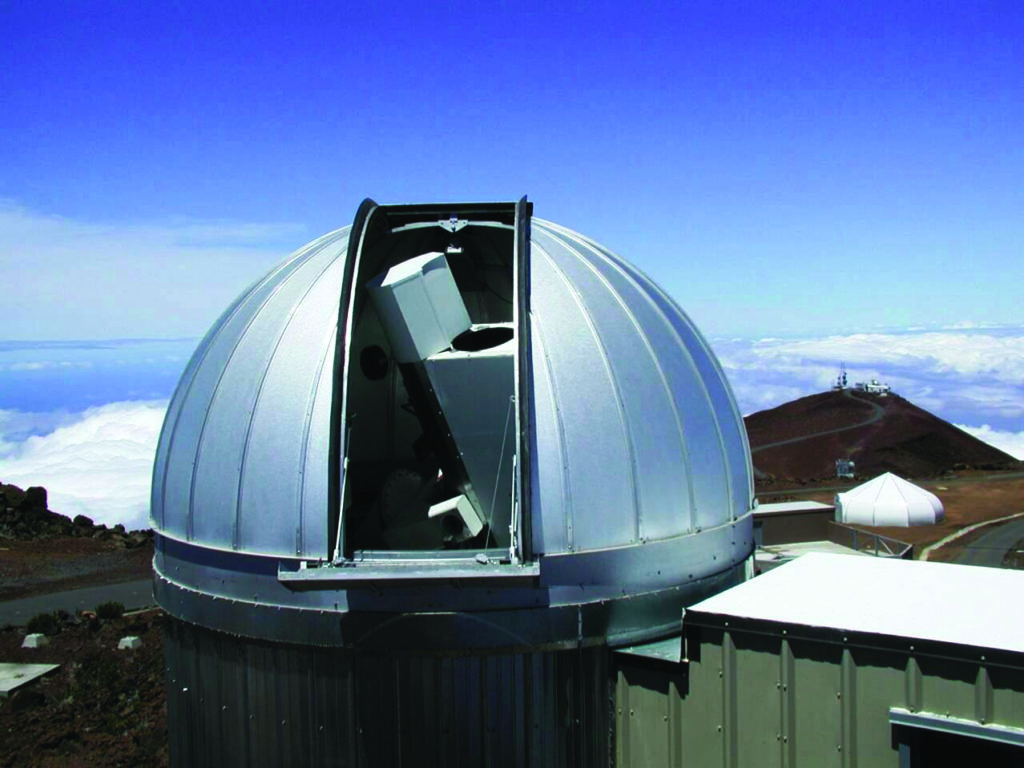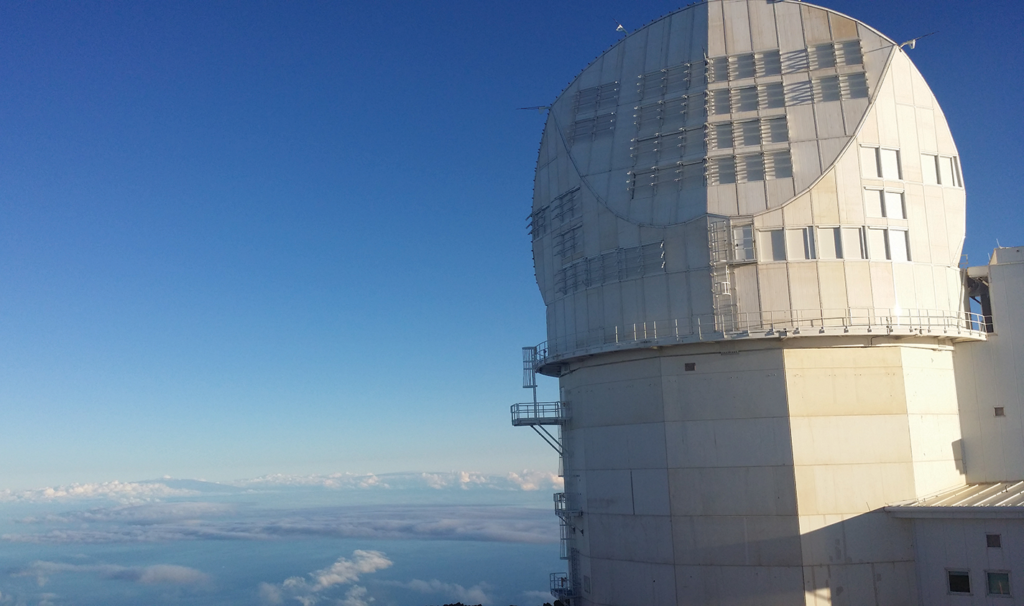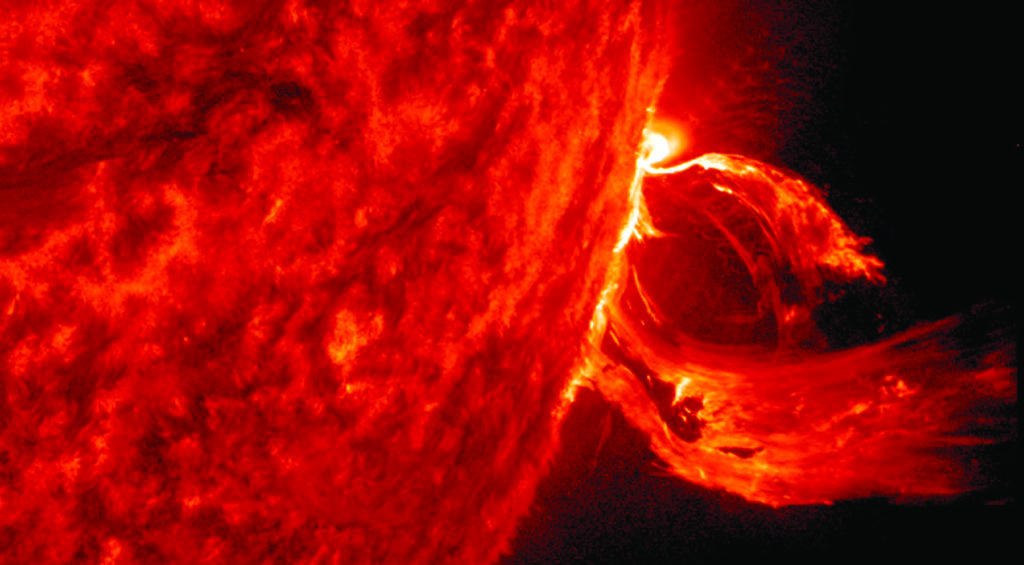Since the earliest times, the Sun seems to have played a central role not only in everyday life, but also in religion, art, culture and science. More than 1000 years ago, the Chinese noticed that the Sun varied slowly as tiny dark spots moved across its visible disk. Although meticulous records of these events were primarily kept for astrological or political purposes, these pre-telescope astronomers could be considered as one of the earliest solar scientists. Six hundred years later, Galileo Galilei trained the lenses of his new telescope toward the Sun and officially discovered sunspots. But it wasn’t until 1908, that the true power of the Sun was uncovered by George Hale’s discovery of strong magnetic fields.
Today, most people are not as concerned with the Sun’s changes or the resulting solar weather patterns—taking an obviously greater interest in the weather on Earth. However, the Sun warms the seas, stirs the atmosphere, generates weather patterns and provides the energy that allows plant growth—fueling all life on Earth.

For Dr. Jeffrey Kuhn, an astronomer at the University of Hawai‘i at Mānoa’s Institute for Astronomy (IfA), the Sun fuels his passion to uncover the scientific mysteries that surround this yellow dwarf star at the center of the Solar System, 92.96 million miles from Earth. According to Kuhn, fluctuating solar weather has influenced the price of wheat, the rise of the sea and the disappearance of civilizations throughout history. More recently, a solar flare in 2003 darkened Sweden’s power grid, disabled Japanese satellites and caused disorientation to pilots flying over the North Pole.
“Even scientists whose research is not devoted to the Sun, need to understand it,” said Kuhn. “Because of the role it plays as a Rosetta stone for deciphering the planetary solar system environment and the mysteries of more distant parts of the universe.”
Kuhn’s affinity for solar science began after he received his doctorate in physics from Princeton University in 1981, while working to solve problems related to Einstein’s theory of gravity and the Sun. During this time his research turned toward helioseismology, or the study of the Sun’s interior structure and dynamics through oscillations on the surface. This new research tool opened another window into seeing the Sun’s interior and the related gravitational physics.
Through his work and through other helioseismologists, humans have come to understand much about the solar interior. Kuhn’s recent attention has been on the secrets of another enigma—the corona or solar exterior of the Sun. In what has become the new holy grail of solar physics, scientists are trying determine why the temperature of the Sun’s corona is millions of kelvins higher than found on the surface.
“Think of heat flowing backward from a cold room back onto a heater,” said Kuhn. “According to the second law of thermodynamics, energy cannot be transferred in this manner by conventional heat transfer—so another factor is in play involving the heating of the corona.”
Unlike anywhere else, the Sun’s corona stores enormous amounts of energy in the form of magnetic fields that are a bit stronger than the magnetism at the Earth’s surface. These fields are like those that can align terrestrial compass needles. Unfortunately, the physics in the corona that controls how this energy is accumulated and released has been almost invisible to direct observations.
Kuhn’s dedication to his craft eventually led him to Hawai‘i and to the Institute for Astronomy 20 years ago—where he could construct a telescope at one of the few places on Earth where daytime dark-sky conditions allow the possibility of directly measuring coronal magnetism. A few years later on Haleakalā, his unusual off-axis telescope, called SOLARC, successfully isolated the faint coronal signal from the million-times-brighter light that originated from the Sun’s disk. For the first time, by routinely sensing the infrared coronal emissions and the orientation of the IR electromagnetic waves called polarization, Kuhn and his colleagues directly measured the Sun’s weak coronal magnetism with an accuracy comparable to the strength of magnetic fields on the Earth.
Scientists now know that magnetic fields create solar variability, ranging from the 11-year Sunspot cycle to the short bursts of flare and coronal mass ejections of x-rays and particles. Each of these energy forms can affect the Earth, either because of their interaction with the Earth’s own magnetism and upper atmosphere or even through tiny changes in the Sun’s radiant brightness due to the sunspot magnetic cycle. This variability makes the Sun an even more important part of the terrestrial climate change puzzle. Measuring that magnetism is the key to understanding and predicting how, why, and when the Sun will change brightness or beam particles or x-rays toward the Earth.
When the Daniel K. Inouye Solar Telescope (DKIST) commences operations in 2020, it will accelerate humankind’s understanding of the corona and solar variability in a way helioseismology fundamentally changed humanity’s knowledge of the solar interior. Similar to SOLARC, DKIST will use an unusual optical telescope to separate the corona’s light from the bright solar disk, but it will be nearly 100 times more powerful because of its much larger 4.2 m diameter primary mirror. At first light, it will include a sensitive detector that was especially designed for measuring this coronal magnetism. Kuhn and his colleagues at the IfA Maui are putting the finishing touches on the Cryogenic Near-Infrared Spectropolarimeter or Cryo-NIRSP—that will give DKIST the power to see the magnetic “dark energy” of the coronal magnetism that controls its evolution and outbursts. With DKIST and this powerful instrument, everyone may soon find it more difficult to take the Sun for granted.



